Product Description
| Material | Stainless Steel |
| Washer Type | Split Lock |
| Exterior Finish | Stainless Steel |
| Size | M3-M50 |
| Metal Type | Stainless Steel |
About this item
- These washers are made from High Quanlity material construction for long lasting durability.
- Widely used water hose washers, perfect for use in garden hoses, water faucet, washing machine, shower head and more
- M8-M18 Gourd Stainless Steel Shaft C-type Elastic External Circlip Snap Retaining Ring Clamp Spring Lock Washer
Main products
About us
ZheJiang Hongniu Automotive Parts Co., Ltd. was founded in June 2000. Located in Tangzhuang Town, the eastern suburbs of the historic and cultural city of HangZhou, with convenient transportation. The company covers an area of 35000 square CZPT and currently has over 300 employees, including 70 high-level and intermediate professional and technical personnel. Registered capital of 20 million yuan, total assets of 78 million yuan, and fixed assets of 56 million yuan. Main products: Series standard parts (including national standard and non-standard parts); Various types of automotive parts, hydraulic components, castings, and wind power products; aerospace fasteners, etc. Widely used in industries such as aerospace, machinery, wind power, textiles, automotive manufacturing, petroleum, forging, etc. We have maintained good cooperative relationships with dozens of large and medium-sized enterprises in China, and are highly favored by our customers with our good reputation and excellent quality.
FAQ
Q1: What is your main products?
A1: Our main sale products: series standard parts (including national standard and non-standard parts); Various types of automotive parts, hydraulic components, castings, and wind power products; aerospace fasteners, etc.
Q2: How long is your delivery time?
A2: Generally it is 10-15 days if the goods are in stock. or it is over 30 days if the goods are not in stock, it is according to quantity.
Q3: What is your payment method?
A3: 30% value of T/T in advance and other 70% balance on B/L copy. For small order less than 5000USD, would suggest you pay 100% inadvance to reduce the bank charges.
Q4: Can you provide a sample?
A4: Sure, Our sample is provided free of charge, but not including courier fees.
Q5: Can you customize the product according to the requirements of drawing sheets and so on?
A5: Sure, we can customize the products according to your requirements of drawing sheets, samples and so on. Product information include: material, surface treatment, specification and amount.
/* January 22, 2571 19:08:37 */!function(){function s(e,r){var a,o={};try{e&&e.split(“,”).forEach(function(e,t){e&&(a=e.match(/(.*?):(.*)$/))&&1
| Type: | Flat Gasket |
|---|---|
| Material: | Stainless Steel |
| Combination Washer Structure: | A Type |
| Combination Washer Packaging: | All Inclusive |
| Spring Washer Type: | Standard |
| Dimensions: | Customized |
| Samples: |
US$ 1/Piece
1 Piece(Min.Order) | |
|---|
| Customization: |
Available
| Customized Request |
|---|
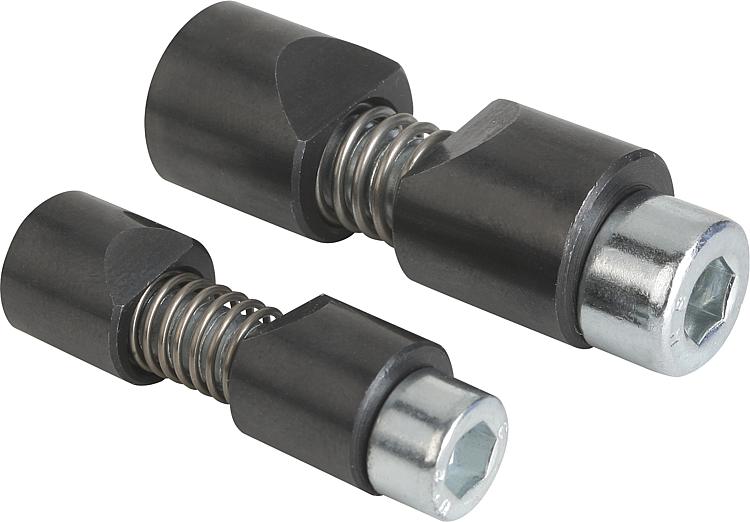
Can I purchase shaft clamps with specific features for use in high-speed applications?
Yes, you can purchase shaft clamps with specific features designed for use in high-speed applications. Here’s a detailed explanation:
When selecting shaft clamps for high-speed applications, it’s important to consider their design, materials, and features to ensure optimal performance and safety. Here are some key features to look for when purchasing shaft clamps for high-speed applications:
1. High-Speed Rating:
Ensure that the shaft clamps are explicitly designed and rated for high-speed applications. Look for clamps that are specifically labeled or advertised as suitable for high rotational speeds. These clamps are engineered to withstand the centrifugal forces and vibrations associated with high-speed rotation.
2. Balancing and Vibration Damping:
Shaft clamps with features that address balancing and vibration damping are crucial for high-speed applications. Look for clamps that incorporate balancing mechanisms or built-in vibration damping elements. These features help minimize vibrations and maintain stability during high-speed operation, which is essential for smooth performance and to prevent damage to the shaft and connected components.
3. Precision and Accuracy:
In high-speed applications, precision and accuracy are vital. Look for shaft clamps that offer precise and consistent clamping force to ensure secure and uniform grip on the shaft. This helps maintain concentricity and eliminates slippage or misalignment that could lead to performance issues or damage at high speeds.
4. Heat Dissipation:
High-speed applications generate heat due to increased friction and rotational forces. It’s important to choose shaft clamps that can effectively dissipate heat to prevent excessive temperature rise. Look for clamps made from materials with good heat conductivity or designs that incorporate cooling features such as fins or heat sinks.
5. Material Selection:
The materials used in the construction of shaft clamps play a crucial role in their performance at high speeds. Look for clamps made from high-quality materials with excellent strength, fatigue resistance, and dimensional stability. Materials such as stainless steel, alloy steel, or other heat-treated alloys are commonly used for high-speed applications due to their desirable mechanical properties.
6. Compatibility and Size Range:
Ensure that the shaft clamps you purchase are compatible with the size and specifications of your shaft. Consider clamps that offer a range of sizes to accommodate various shaft diameters. It’s important to select a clamp that provides proper fitment and sufficient clamping force without damaging the shaft or causing excessive stress.
When purchasing shaft clamps with specific features for high-speed applications, it’s advisable to consult with reputable suppliers or manufacturers who specialize in clamping solutions for high-speed machinery. They can provide guidance on selecting the most suitable clamps based on your specific application requirements and help ensure optimal performance and safety in high-speed environments.
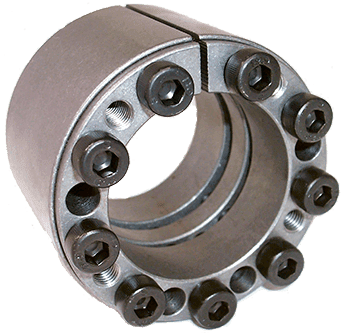
Where can I purchase shaft clamps with specific certifications for certain industries?
If you are looking to purchase shaft clamps with specific certifications for certain industries, there are several avenues you can explore. Here are some options to consider:
- Specialized Suppliers: Look for specialized suppliers or distributors that cater to the specific industries requiring certified shaft clamps. These suppliers often have in-depth knowledge of industry standards and can provide shaft clamps with the necessary certifications. They may offer a wide range of products designed for applications in industries such as aerospace, automotive, medical, or oil and gas.
- Manufacturer Direct: Contact the shaft clamp manufacturers directly and inquire about their offerings with specific certifications for your target industry. Many manufacturers have dedicated product lines or variants that comply with industry-specific standards and certifications. They can guide you to the appropriate products or provide customization options to meet your specific requirements.
- Trade Shows and Exhibitions: Attend trade shows, exhibitions, or industry conferences related to your target industry. These events often bring together a wide range of suppliers, manufacturers, and industry experts. It’s an opportunity to explore different vendors, discuss your requirements, and find shaft clamp suppliers who specialize in providing certified products for specific industries.
- Online Marketplaces: Utilize online marketplaces and sourcing platforms that connect buyers with suppliers. Platforms such as Alibaba, Thomasnet, or Global Sources allow you to search for shaft clamp suppliers and filter results based on certifications and industry requirements. You can directly communicate with suppliers, request quotes, and compare offerings to find the ones that meet your specific needs.
- Industry Associations and Networks: Reach out to industry associations, professional networks, or trade organizations related to your target industry. They often have resources and directories that can help you connect with suppliers specializing in certified shaft clamps for specific applications. These associations may also provide guidance on industry standards and certifications relevant to your needs.
- Referrals and Recommendations: Seek referrals or recommendations from industry peers, colleagues, or professionals who have experience in the same industry or similar applications. Their insights and firsthand experiences can help you identify reputable suppliers known for providing certified shaft clamps. Online forums, LinkedIn groups, or professional networks can be valuable sources for seeking recommendations.
When purchasing shaft clamps with specific certifications, it’s essential to clearly communicate your requirements to the suppliers. Provide details about the industry certifications, standards, or specific regulations that the shaft clamps need to comply with. This ensures that you receive the appropriate products that meet the necessary criteria for your industry or application.
Remember to conduct due diligence when selecting suppliers, verifying their certifications, reputation, and product quality. It is also important to evaluate factors such as pricing, lead times, and customer support when making a purchase decision.
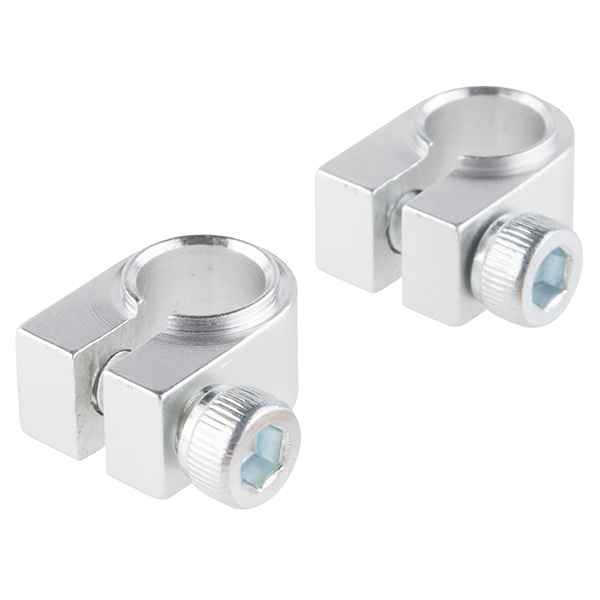
What are the key features to consider when selecting a shaft clamp for a specific application?
When selecting a shaft clamp for a specific application, several key features should be taken into consideration. These features will help ensure that the chosen shaft clamp is suitable for the intended use and provides optimal performance. Here are the key features to consider:
- Shaft Diameter: The shaft clamp must be compatible with the diameter of the shaft it will be installed on. Measure the diameter of the shaft accurately and choose a shaft clamp that matches or has an adjustable range to accommodate the specific shaft size.
- Material: Consider the material of the shaft clamp, as it can impact factors such as strength, corrosion resistance, and temperature tolerance. Common materials for shaft clamps include steel, stainless steel, aluminum, and plastic. Select a material that suits the environmental conditions and requirements of the application.
- Clamping Mechanism: Evaluate the clamping mechanism used in the shaft clamp. Common types include screw-based mechanisms, lever-operated mechanisms, or cam-style mechanisms. Consider the ease of installation, adjustment, and the level of grip provided by the clamping mechanism.
- Load Capacity: Determine the expected load or torque that the shaft clamp will need to withstand. Check the manufacturer’s specifications to ensure that the chosen shaft clamp can handle the anticipated loads without compromising performance or safety.
- Application Environment: Assess the environmental conditions in which the shaft clamp will be used. Factors such as temperature extremes, humidity, exposure to chemicals, or abrasive particles can affect the performance and durability of the shaft clamp. Choose a shaft clamp that is designed to withstand the specific environmental challenges of the application.
- Certifications and Compliance: In certain industries or applications, specific certifications or compliance with standards may be required. Examples include ISO certifications, FDA compliance for food-related applications, or industry-specific quality management system certifications. Verify that the shaft clamp meets the necessary certifications or standards for your application.
- Installation and Maintenance: Consider the ease of installation and maintenance of the shaft clamp. Look for features such as tool-less installation, accessible adjustment mechanisms, or provisions for lubrication if required. A shaft clamp that is easy to install and maintain can save time and effort in the long run.
- Compatibility with Components: Ensure that the shaft clamp is compatible with the components that need to be secured onto the shaft. Consider factors such as the shape, size, and attachment requirements of the components. The shaft clamp should provide a secure and stable connection without interfering with the functionality of the attached components.
By considering these key features, you can select a shaft clamp that is well-suited for your specific application, providing reliable and efficient performance. It is recommended to consult with manufacturers, suppliers, or industry experts for further guidance and to ensure the most appropriate choice for your specific requirements.


editor by Dream 2024-05-09
China Custom 304 Stainless Steel Clamp E-Type Clamp DIN6799 Spring Steel E-Type Clamp Ring for Fixing Ring Washer Shaft shaft collar bracket
Product Description
Product Description
| Name | 304 stainless steel clamp E-type clamp DIN6799 Spring steel E-type clamp ring for fixing ring washer shaft |
| Place of Origin | HangZhou, ZHangZhoug, China |
| Size | φ0.8-φ30 |
| Finish | Plain, Zinc Plated, Black Oxi,Dacromet,Phosphating |
| Material | Carbon steel(C67S,65Mn) Stainless steel (304) |
| Grade | HV470-580 |
| Standard | DIN6799/GB896,etc |
| Non-standards | OEM is available, according to drawing or physical samples |
| Samples | Samples are free and shipping cost by your side |
| Package | Bulk in master cartons, then on pallets, or according to customers’ requirement. |
| Payment | T/T, L/C |
Company Profile
WJ is a manufacturing-and trading-integrated company located in HangZhou, China. We are specialized in developing and manufacturing all kinds of fasteners. Our main products include bolts, studs, screws, nuts, shafts, pins, washers, retaining rings, and other categories.
WJ also customizes all kinds of non-standard products. We focus on technology development and product optimization and have advanced production research and development testing equipment.
You are welcome to send us an inquiry to get more information.
Our Advantages
√ Over 15 years fastener OEM service experience
√ Quick response to inquiries and questions
√ Strict QC process and Testing process
√ Free sample available
√ Package customizable
Testing Machines
Packaging & Shipping
FAQ
What is your delivery time?
It depends. If we have bulk goods in stock, we can ship goods within 3 days after the QC process. If we don’t have stock, normally it takes 7-15 days for OEM samples and 20-30 days for bulk goods. If it refers to opening the new mold, it takes an extra 7-15 days to make the mold.
What are your payment terms?
Normally, we make a 30% deposit after PI confirmation and a 70% balance before shipment.
How do you guarantee good quality?
A pre-bulk sample check can solve this problem to the largest extent. We will arrange production according to the pre-bulk sample quality standard after your confirmation of the samples.
/* January 22, 2571 19:08:37 */!function(){function s(e,r){var a,o={};try{e&&e.split(“,”).forEach(function(e,t){e&&(a=e.match(/(.*?):(.*)$/))&&1
| Customized: | Non-Customized |
|---|---|
| Certification: | CE, ISO |
| Material: | Stainless Steel |
| Grade: | Hv470-580 |
| Transport Package: | Carton+Pallet |
| Specification: | φ 0.8-φ 30, customizable |
| Customization: |
Available
| Customized Request |
|---|
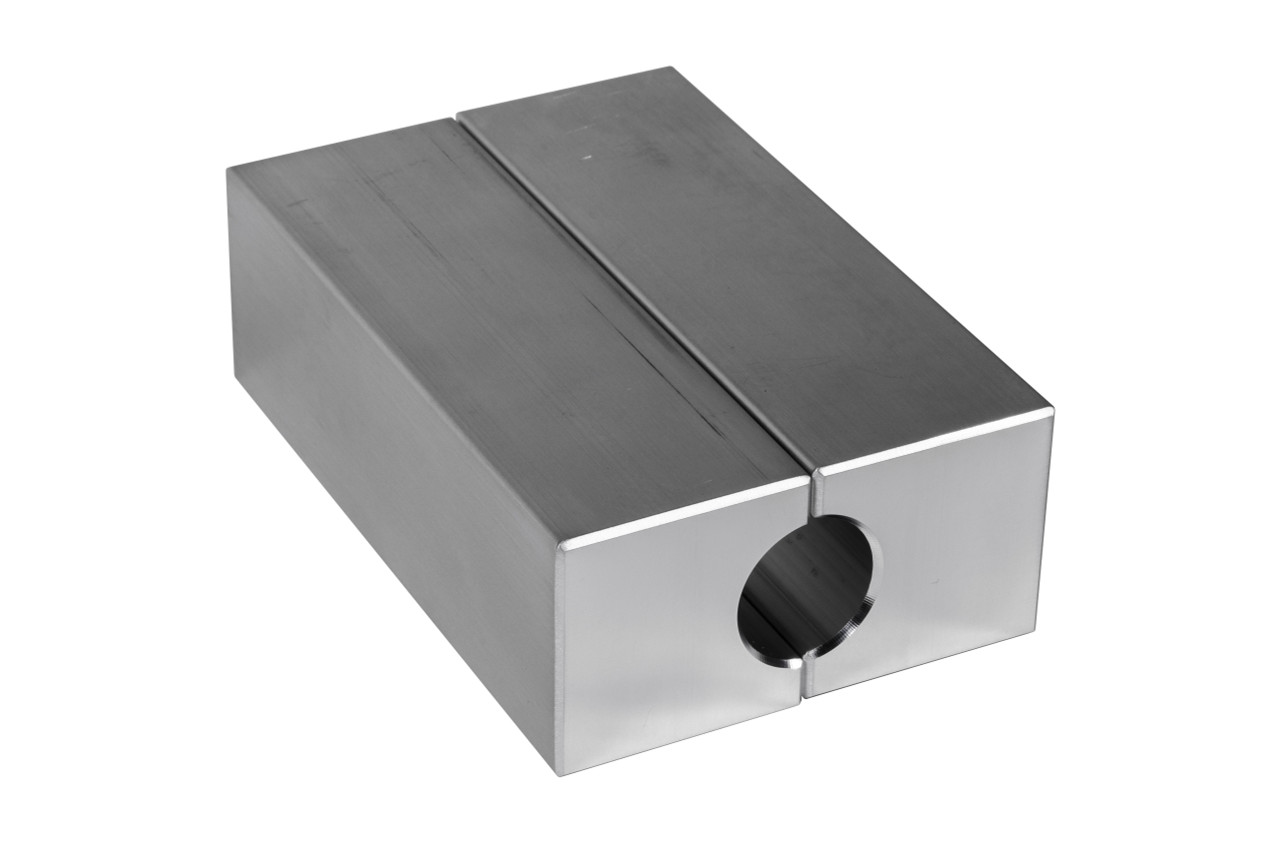
What are the steps for replacing existing fastening methods with shaft clamps?
If you are considering replacing existing fastening methods with shaft clamps, here’s a detailed explanation of the steps involved:
- Evaluation and Planning: Start by evaluating the existing fastening methods and assessing the suitability of shaft clamps for your specific application. Identify the reasons for replacing the current fastening method and determine the desired outcomes and performance improvements. Plan the transition process, considering factors such as the number of clamps required, their specifications, and any modifications needed.
- Shaft Preparation: Prepare the shaft by cleaning it thoroughly and ensuring it is free from dirt, debris, and any existing fasteners or fastening elements. If necessary, remove any existing fasteners or components that will be replaced by the shaft clamps.
- Selection of Shaft Clamps: Choose the appropriate shaft clamps based on the requirements of your application. Consider factors such as shaft diameter, material compatibility, load capacity, and any specific features needed for your application (e.g., high-speed rating, corrosion resistance, etc.). Refer to the manufacturer’s specifications and guidelines to ensure proper selection.
- Positioning and Alignment: Position the shaft clamps at the desired locations along the shaft. Ensure proper alignment and concentricity with the shaft and the components being fastened. Use alignment tools or precision measurement instruments as needed to achieve accurate positioning.
- Installation: Install the shaft clamps by following the manufacturer’s instructions. Typically, this involves tightening the clamping screws or bolts evenly and gradually, ensuring that the clamps apply sufficient clamping force without causing deformation or damage to the shaft or components. Use the recommended torque values and tightening sequence provided by the manufacturer.
- Testing and Adjustment: After installing the shaft clamps, conduct thorough testing to ensure proper fastening, alignment, and performance. Check for any excessive vibrations, slippage, or misalignment. Make adjustments as necessary, such as tightening or loosening the clamps, repositioning components, or adding additional clamps for improved stability.
- Monitoring and Maintenance: Regularly monitor the performance of the shaft clamps and the overall system. Inspect the clamps for any signs of wear, looseness, or corrosion. Follow the manufacturer’s recommendations for maintenance, such as periodic inspection, lubrication, or replacement of components.
It’s important to note that the steps for replacing existing fastening methods with shaft clamps may vary depending on the specific application, machinery, and manufacturer recommendations. It’s advisable to refer to the manufacturer’s documentation, consult with qualified engineers or technicians, and follow industry best practices to ensure a successful transition and optimal performance with shaft clamps.

Can I find guidelines on lubricating and maintaining shaft clamps for optimal performance?
Yes, guidelines for lubricating and maintaining shaft clamps can be found to ensure optimal performance. Here’s a detailed explanation:
When it comes to lubricating and maintaining shaft clamps, it’s important to refer to the manufacturer’s guidelines and recommendations specific to the type of clamp being used. These guidelines may vary depending on the design, materials, and intended application of the shaft clamp. However, here are some general considerations:
1. Lubrication:
Some shaft clamps may require lubrication to reduce friction and ensure smooth operation. The type of lubricant and the frequency of lubrication will depend on the specific clamp design and the environmental conditions in which it operates. It’s important to use lubricants that are compatible with the materials of the clamp and the shaft to avoid degradation or damage. The manufacturer’s guidelines will provide specific recommendations on the appropriate lubrication method and lubricant type.
2. Inspection and Cleaning:
Regular inspection and cleaning of the shaft clamps are essential for maintaining optimal performance. Inspect the clamps for any signs of wear, damage, or misalignment. Clean the clamps to remove any dirt, debris, or contaminants that may affect their operation. Use appropriate cleaning methods and avoid using harsh chemicals that could damage the clamp or its surface finish.
3. Torque Checks:
Over time, the clamping force of the shaft clamp may diminish due to factors such as vibration or thermal expansion. It’s important to periodically check and verify the torque settings of the clamp to ensure that it maintains the desired clamping force. This can be done using torque wrenches or other suitable torque measurement tools as specified by the manufacturer.
4. Environmental Considerations:
Consider the operating environment of the shaft clamp when determining the maintenance requirements. In harsh or corrosive environments, additional protective measures may be necessary to prevent corrosion or deterioration of the clamp. This can include applying protective coatings or using corrosion-resistant materials.
5. Replacement and Spare Parts:
If a shaft clamp shows signs of significant wear or damage that cannot be remedied through maintenance, it may be necessary to replace the clamp. Ensure that replacement clamps or spare parts are obtained from reputable sources and are compatible with the specific clamp design.
It’s important to note that these are general considerations, and the specific maintenance requirements for shaft clamps may vary. Always consult the manufacturer’s guidelines and recommendations for the particular make and model of the shaft clamp to ensure proper lubrication and maintenance practices are followed. Adhering to these guidelines will help optimize the performance, longevity, and reliability of the shaft clamps in your machinery.
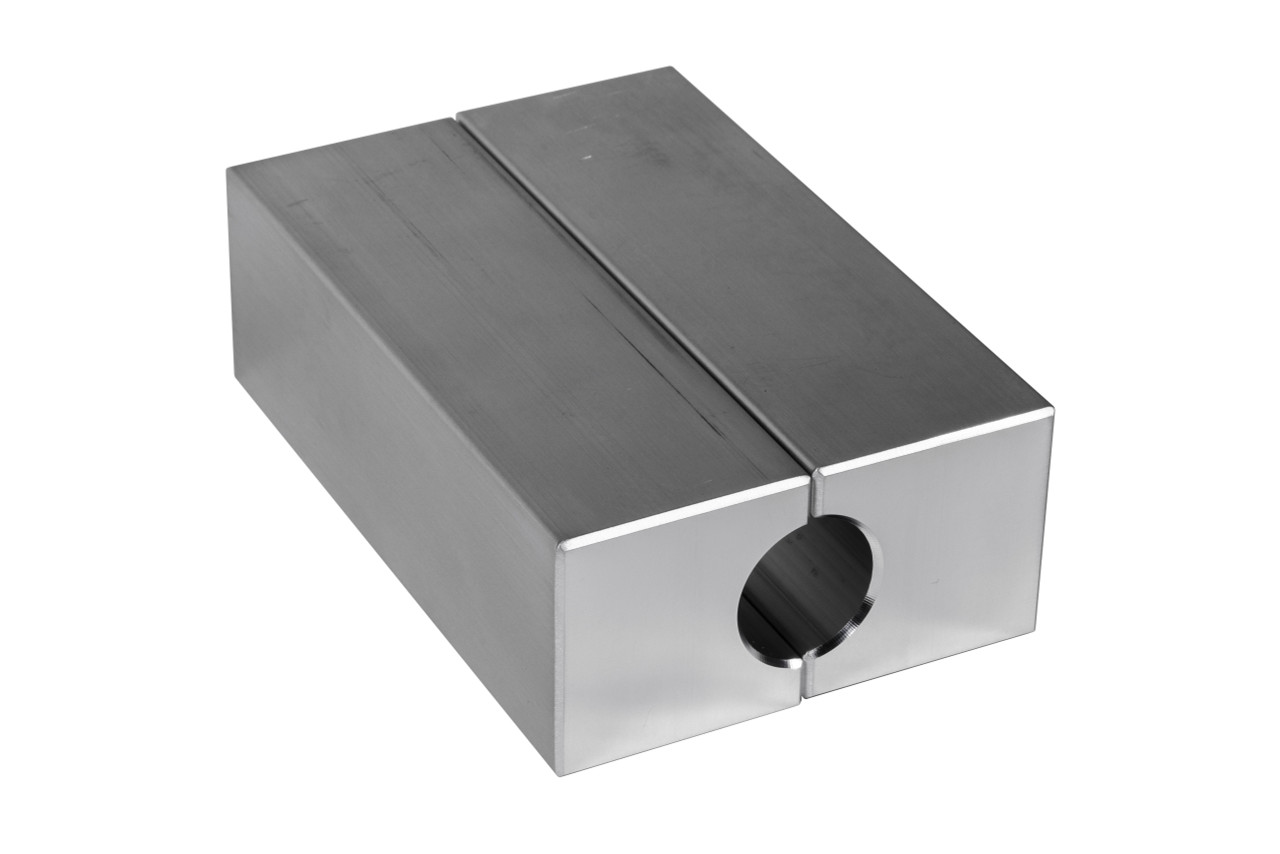
Can I get recommendations for shaft clamps suitable for different shaft diameters?
When it comes to selecting shaft clamps for different shaft diameters, it is important to consider the specific requirements of your application. While I can’t provide specific product recommendations as an AI, I can offer some general guidelines to help you in your search. Here’s what you should keep in mind:
1. Determine the Shaft Diameter Range: Measure the diameter of the shaft or shafts you are working with. This will give you the range of shaft diameters that you need to consider when selecting shaft clamps. Note down the minimum and maximum diameter values.
2. Research Shaft Clamp Manufacturers: Look for reputable manufacturers or suppliers that specialize in mechanical components, including shaft clamps. Visit their websites or contact them directly to explore their product offerings.
3. Check Product Specifications: Once you have identified potential shaft clamp manufacturers, review the product specifications of their shaft clamps. Look for information on the range of shaft diameters that each clamp can accommodate. Manufacturers typically provide this information in their product datasheets or catalogs.
4. Consult with Manufacturers or Distributors: If you have specific requirements or need assistance in selecting the right shaft clamps for your application, reach out to the manufacturers or distributors. They can provide expert guidance and recommendations based on your shaft diameter range and other application needs.
5. Consider Adjustable Shaft Clamps: Some shaft clamps are designed with adjustable features to accommodate a range of shaft diameters. These clamps often have a split design or include adjustable screws or levers that allow for flexibility in sizing. Adjustable shaft clamps can be a convenient option if you are working with multiple shaft diameters or if you anticipate changes in shaft sizes in the future.
6. Evaluate Material and Design Considerations: Take into account the material and design of the shaft clamps. Consider factors such as load capacity, environmental conditions, and compatibility with the components being secured. Choose a shaft clamp that not only fits the shaft diameter but also meets the specific requirements of your application.
Remember, the suitability of a shaft clamp is not solely determined by the shaft diameter range it can accommodate. It is crucial to consider all relevant factors, including load capacity, material compatibility, and environmental considerations, to ensure a reliable and secure connection between the shaft and the components being secured.
By following these guidelines and working closely with manufacturers or distributors, you can find shaft clamps that are suitable for different shaft diameters in your specific application.


editor by CX 2024-03-30
China manufacturer Precision CNC Machinery Parts Spring Shaft Steel Flex Bibby Falk Grid Coupling shaft collar bore size
Product Description
|
Process: |
CNC Machining, turning,milling, lathe machining, boring, grinding, drilling,broaching, stamping,etc… |
|
Surface treatment: |
Clear/color anodized; Hard anodized; Powder-coating;Sand-blasting; Painting; |
|
Nickel plating; Chrome plating; Zinc plating; Silver/gold plating; |
|
|
Black oxide coating, Polishing etc… |
|
|
Gerenal Tolerance:(+/-mm) |
Gear grade :7Gread (ISO) |
|
Run Out:0.005mm |
|
|
Roundness:0.001mm |
|
|
ID/OD Grinding: 0.002 |
|
|
Roughness : Ra 0.05 Rz 0.2 |
|
|
Certification: |
IATF 16949, ISO140001 |
|
Experience: |
16 years of machining products |
|
Packaging : |
Standard: carton with plastic bag protecting |
|
For large quantity: pallet or wooden box as required |
|
|
Lead time : |
In general:30-60days |
|
Term of Payment: |
T/T, L/C |
|
Minimum Order: |
Comply with customer’s demand |
|
Delivery way: |
Express(DHL,Fedex, UPS,TNT,EMS), By Sea, By air, or as required |
ZheZheJiang nlead Precision Co., Ltd. which focuses on CNC machining, including milling, turning, auto-lathe turning,holing,grinding, heat treatment from raw materials of bars, tube, extruded profiles, blanks of cold forging & hot forging, aluminum die casting.
We provide one-stop service, from professional design analysis, to free quote, fast prototype, IATF16949 & ISO14001 standard manufacturing, to safe shipping and great after-sales services.During 16 years, we have win lots of trust in the global market, most of them come from North America and Europe.
Now you may have steady customers, and hope you can keep us in the archives to get more market news.
Sunlead produce all kinds of machining parts according to customer’s drawing, we can produces stainless steel Turned parts,carbon steel Turned parts, aluminum turned parts,brass & copper turned parts.
Please feel free to send inquiry to us, and our professional sales manager will get back to you ASAP!
FAQ:
Q1: How can I get the samples?
A: If you need some samples to test, you should pay for the transportation freight of samples and our samples cost.
Q2: Can we have our marking,Logo or company name to be printed on your products or package?
A: Sure. Your marking,logo,or company name can be put on your products by Laser machine
Q3: How to order?
A: Please send us your purchase order by Email, or you can ask us to send you a Performa invoice for your order. We need to know the following information for your order.
1) Product information-Quantity, Specification ( Size, Material, Technological and Packing requirements etc.)
2) Delivery time required
3) Shipping information-Company name, Street address, Phone&Fax number, Destination sea port.
4) Forwarder’s contact details if there’s any in China.
Q4: When can you get the price?
We usually quote within 48 hours after we get your inquiry. If you are very urgent to get the price, please call us or tell us in your email so that we will regard your inquiry priority. Kindly note that if your inquiry is with more details then the price we quote will be more accurate.
Q5: How can you get a sample to check our quality?
After price confirmation, you can require for samples to check our quality.
Q6: What kind of files do we accept for drawing?
A: PDF, CAD,STP,STEP
Q7: What about the lead time for mass production?
Honestly, it depends on the order quantity and the season you place the order. Generally speaking,it would need about 30-60days to finish the sample.
Q8: What is our terms of delivery?
We accept EXW, FOB, CFR, CIF, DDU, DDP, etc. You can choose the 1 which is the most convenient or cost effective for you.
|
Shipping Cost:
Estimated freight per unit. |
To be negotiated |
|---|
| Application: | Fastener, Auto and Motorcycle Accessory, Hardware Tool, Machinery Accessory |
|---|---|
| Standard: | GB, EN, China GB Code |
| Surface Treatment: | as Requiried |
| Samples: |
US$ 1.2/Piece
1 Piece(Min.Order) | Order Sample According to requirement
|
|---|
| Customization: |
Available
| Customized Request |
|---|
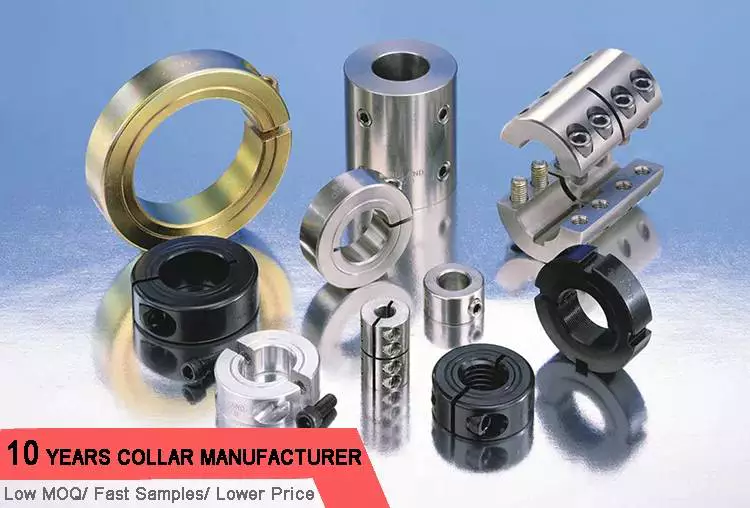
Types of Shaft Collars
A shaft collar is a simple machine component that plays a critical role in power transmission. It is typically found in gearboxes and motors, and serves as a bearing face, mechanical stop, and locating component. Its simple design makes it easy to install and use. Its various functions make it a useful machine part for many applications.
Set screw shaft collars
Set screw shaft collars are used in many different applications and can be manufactured in a variety of materials. Typical materials include carbon steel, stainless steel, platinum, silver, nylon, polysulphone, PTFE, and PVC. Collars are easy to install and adjust. A variety of secondary services are available, including internal forming, chroming, and passivating.
Set screw shaft collars come in different styles, including standard collars, quick-release collars, split collars, and threaded collars. They can be purchased in standard and metric sizes, and are available in a variety of finishes. Standard collars are available in steel and stainless steel and have a zinc plated or black oxide finish.
Set screw shaft collars are an excellent choice for holding power transmission components in place and limiting shaft movement. They are held in place by a set screw that digs into the shaft material, providing holding power. They are available in both 303 and 316 Stainless Steel, making them a reliable and efficient choice for a variety of applications.
Clamping-style shaft collars
Clamp-style shaft collars are a versatile alternative to set-screw collars. They eliminate the problems associated with the set-screw collar, such as the possibility of shaft damage. They also lock in place by compressing against the shaft. This method distributes the force on the collar and shaft evenly, creating a stronger holding power.
Shaft collars are manufactured by many companies. You can buy them in-store or online, but it is important to buy from a reputable manufacturer. Many counterfeit collars endanger the life of your machine. Choosing a quality collar will help you avoid costly and time-consuming machine breakdowns.
Clamping-style shaft collars come in a variety of sizes and types. Some of them have a hex or D-bore. Some have circular grooves to assist with installation. They can be found in bore sizes from 1/4″ to one inch. They are often used for mounting gears, sprockets, and bearings.
Two-piece clamp collars are an excellent choice for high-load applications. They have improved clamping force and impressive holding power, and can be easily installed without major disassembly. Two-piece clamp collars can also be designed with a keyway to secure a keyed shaft. There are also special double-wide clamp collars for high axial load applications.
Another type of shaft collar is the quick clamping collar. It is an excellent choice for applications where you want to make frequent setup and adjustments. It allows for easy adjustments with minimal tools. Quick clamping collars feature a cam lever and a clamping lever. They are convenient and highly flexible, making them ideal for use in many industries.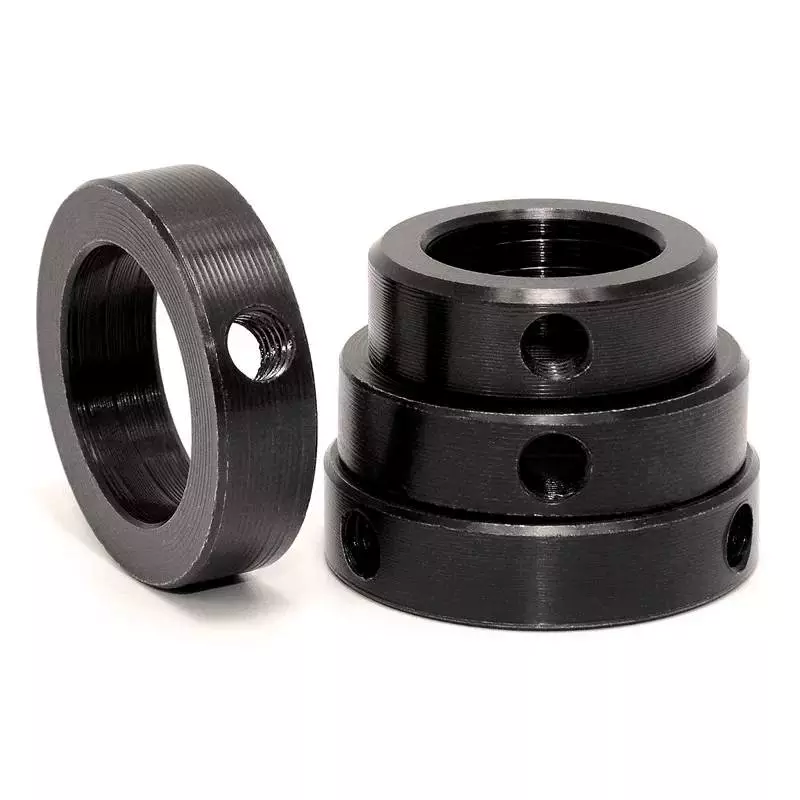
Single split shaft collars
A single split shaft collar is designed to fit one shaft and eliminate two pieces. This makes installation and disassembly easy, reducing labor and downtime. It also uses a full seating torque of the set screws to distribute forces evenly around the shaft circumference, providing stronger holding power. It can be used on a wide range of rotating equipment.
Single split shaft collars are available from CZPT Products. They are a common, high-quality way to secure a shaft. They wrap around the shaft for a secure and tight fit. They are also a versatile option that can be easily removed. These collars can be used on both hard and soft standard round shafts. They provide superior grip compared to solid collars, provide tremendous axial force, and minimize shaft distortion.
Single split shaft collars are one of the many types of bearing shaft locking collars. They are made of EN8 steel, and come with a locking setscrew. This makes installing the collar quick and easy. The collar is available in many sizes, including small, medium, and large. If you do not find the right fit, you can also have one custom-made.
These collars are commonly used for mounting fixtures, sensors, and other assemblies. They are available in two-piece and one-piece styles, and have higher holding power than standard shaft collars. They are available in a wide range of materials, including 1215 lead-free steel, 303 stainless steel, and lightweight 2024 aluminum.
Aluminum shaft collars
The CZPT company produces Aluminum shaft collars for a variety of applications. These shaft collars feature a proprietary manufacturing process to ensure accurate face-to-bore perpendicularity. This helps to improve clamping forces and installation fit. Each collar features the CZPT name stamped on it, and the collar is finished with a black oxide process to achieve a fine glossy finish. The shaft collars are available in a variety of bore sizes and styles, and can be ordered in single or two-piece styles. Additionally, they are manufactured with a high-grade forged screw, which ensures the highest quality.
Aluminum shaft collars can be customized to fit your needs. Several accessories can be added to the shaft collar, such as steel mending plates. Those who need extra load capacity can select a keyed shaft collar. They are also available in lightweight styles. These shaft collars are easy to install and disassemble, and are made from two-piece aluminum for ease of installation.
Choosing the right shaft collar material is critical to the success of your application. You should consider steel, stainless steel, or aluminum for the best corrosion resistance. Steel is stronger and offers better holding power, while aluminum offers a lower weight and a favorable strength-to-weight ratio. When selecting shaft collars, it is important to take into consideration the corrosion resistance of each material. For example, carbon steel shaft collars will not be as corrosion resistant as aluminum shaft collars, but they are lighter and have a good hold power.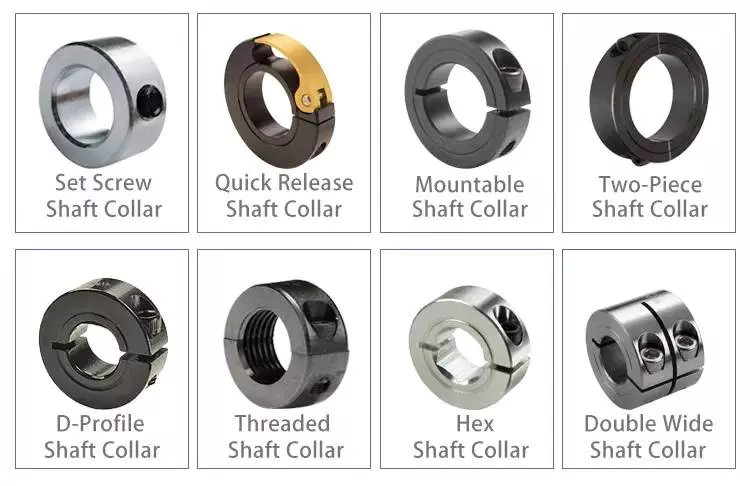
Carbon steel shaft collars
Carbon steel shaft collars are a versatile solution to holding bearings in place. They are available in a range of diameters and styles to meet your application needs. They can be used for many different applications, from aerospace and military applications to marine and automotive applications. These collars are available in a variety of materials, including carbon steel, aluminum, and stainless steel.
Carbon steel shaft collars are a cost-effective alternative to stainless steel shaft collars. CZPT manufactures lead-free carbon steel shaft collars, and they are also available with RoHS-compliant yellow zinc plating. Zinc plating is less expensive than stainless steel and is an excellent anti-corrosive option. CZPT yellow zinc collars are plated by a trivalent process rather than a non-compliant hexavalent process.
Shaft collars are available in both metric and inch bore sizes. They can be used for a variety of applications and are typically available in sizes ranging from 1/4″ to three inches. They are also available with metric screws in a range of sizes, which are useful for retrofitting equipment.
Shaft collars are available in a variety of materials, including carbon steel, 303 stainless steel, and aluminum. Some options feature threads and can be welded or bolted to shafts. For more advanced applications, aluminum threaded shaft collars can be used. They are often used for mounting sensors, fixtures, and other assemblies. They come in several styles, such as double-wide, heavy-duty, and threaded.
Hinge shaft collars
Hinge shaft collars are fastening devices that secure shafts or axles. They come in a wide range of sizes, shapes, and materials. These collars can be used in a wide range of applications, including non-rotary applications. They can be manufactured in stainless steel, 1018 steel, aluminum, and brass.
Shaft collars are simple to use but can perform a variety of functions. Their primary functions include holding components in place, locating components on a shaft, and establishing attachment between the shaft and another component. To choose the right collars for a specific application, designers should consider the design, style, materials, bore size, and geometry of the shaft. They should also consider any limitations or requirements associated with the application.
Hinge shaft collars are available in round and square bores. They are most commonly used in agricultural applications. Their size makes them easy to install, and their design makes them suitable for both large and small shafts. They are also used in situations where shafts are not easily accessible. Some types of shaft collars feature flat surfaces, which are great for mounting applications and splitting hubs.
Heavy duty shaft collars are also available. These collars have larger outer diameters, wider bores, and larger screw diameters. They are manufactured from lead-free steel with a proprietary black oxide finish.

editor by CX 2023-06-07
China best Hj92n-100mm Mechanical Seals Hj92n Series Wave Spring Pusher Seals Shaft Size 100mm for Pump with Great quality
Product Description
Product details
Features
- For unstepped shafts
- Single seal
- Balanced
- Independent of direction of rotation
- Encapsulated rotating spring
Advantages
- Especially designed for solids containing and highly viscous media
- Springs are protected from the product
- Rugged and reliable design
- No damage of the shaft by dynamically loaded O-Ring
- Universal application
- Variant for operation under vacuum available
- Variants for sterile operation available
Operating range
Shaft diameter:
d1 = 18 … 100 mm (0.625″ … 4″)
Pressure:
p1*) = 0.8 abs…. 25 bar (12 abs. … 363 PSI)
Temperature:
t = -50 °C … +220 °C (-58 °F … +430 °F)
Sliding velocity: vg = 20 m/s (66 ft/s)
Axial movement: ±0.5 mm
* An integral stationary seat lock is not needed within the permissible low pressure range. For prolonged operation under vacuum it is necessary to arrange for quenching on the atmospheric side.
Materials
Seal face: Carbon graphite antimony impregnated (A),
Carbon graphite resin impregnated (B)
Seat G16: Silicon carbide (Q1)
Recommended applications
- Pharmaceutical industry
- Power plant technology
- Pulp and paper industry
- Water and waste water technology
- Mining industry
- Food and beverage industry
- Sugar industry
- Dirty, CZPT and solids containing media
- Thick juice (70 … 75 % sugar content)
- Raw sludge, sewage slurries
- Raw sludge pumps
- Thick juice pumps
- Conveying and bottling of dairy products
| ITEM | PART NO. TO DIN 24250 |
DESCRIPTION |
| 1.1 | 472/473 | Seal face |
| 1.2 | 485 | Drive collar |
| 1.3 | 412.2 | O-Ring |
| 1.4 | 412.1 | O-Ring |
| 1.5 | 477 | Spring |
| 1.6 | 904 | Set screw |
| 2 | 475 | Seat (G16) |
| 3 | 412.3 | O-Ring |
| d1 | d3 | d6 | d7 | d8 | dm | l1K | l3 | l5 | l6 | l7 | l18 | l19 | l111) | l122) | l13 | l38 | l39 | f | mx |
|---|---|---|---|---|---|---|---|---|---|---|---|---|---|---|---|---|---|---|---|
| 18 | 32 | 27 | 33 | 3 | 26.0 | 37.5 | 30.5 | 2.0 | 5 | 9 | 15.0 | 7.0 | 39.5 | 35.5 | 28.5 | 17.0 | 9.0 | 3.0 | M4 |
| 20 | 34 | 29 | 35 | 3 | 28.0 | 37.5 | 30.5 | 2.0 | 5 | 9 | 15.0 | 7.0 | 39.5 | 35.5 | 28.5 | 17.0 | 9.0 | 3.0 | M4 |
| 22 | 36 | 31 | 37 | 3 | 30.0 | 37.5 | 30.5 | 2.0 | 5 | 9 | 15.0 | 7.0 | 39.5 | 35.5 | 28.5 | 17.0 | 9.0 | 3.0 | M4 |
| 24 | 38 | 33 | 39 | 3 | 32.5 | 40.0 | 33.0 | 2.0 | 5 | 9 | 15.0 | 7.0 | 42.0 | 38.0 | 31.0 | 17.0 | 9.0 | 3.5 | M5 |
| 25 | 39 | 34 | 40 | 3 | 33.5 | 40.0 | 33.0 | 2.0 | 5 | 9 | 15.0 | 7.0 | 42.0 | 38.0 | 31.0 | 17.0 | 9.0 | 3.5 | M5 |
| 28 | 42 | 37 | 43 | 3 | 36.5 | 42.5 | 35.5 | 2.0 | 5 | 9 | 15.0 | 7.0 | 45.0 | 40.0 | 33.0 | 17.5 | 9.5 | 3.5 | M5 |
| 30 | 44 | 39 | 45 | 3 | 38.5 | 42.5 | 35.5 | 2.0 | 5 | 9 | 15.0 | 7.0 | 45.0 | 40.0 | 33.0 | 17.5 | 9.5 | 3.5 | M5 |
| 32 | 47 | 42 | 48 | 3 | 41.5 | 42.5 | 35.5 | 2.0 | 5 | 9 | 15.0 | 7.0 | 45.0 | 40.0 | 33.0 | 17.5 | 9.5 | 3.5 | M5 |
| 33 | 47 | 42 | 48 | 3 | 41.5 | 42.5 | 35.5 | 2.0 | 5 | 9 | 15.0 | 7.0 | 45.0 | 40.0 | 33.0 | 17.5 | 9.5 | 3.5 | M5 |
| 35 | 49 | 44 | 50 | 3 | 43.5 | 42.5 | 35.5 | 2.0 | 5 | 9 | 15.0 | 7.0 | 45.0 | 40.0 | 33.0 | 17.5 | 9.5 | 3.5 | M5 |
| 38 | 54 | 49 | 56 | 4 | 47.5 | 45.0 | 37.0 | 2.0 | 6 | 9 | 16.0 | 8.0 | 47.5 | 42.5 | 34.5 | 18.5 | 10.5 | 4.0 | M5 |
| 40 | 56 | 51 | 58 | 4 | 49.5 | 45.0 | 37.0 | 2.0 | 6 | 9 | 16.0 | 8.0 | 47.5 | 42.5 | 34.5 | 18.5 | 10.5 | 4.0 | M5 |
| 43 | 59 | 54 | 61 | 4 | 52.5 | 45.0 | 37.0 | 2.0 | 6 | 9 | 16.0 | 8.0 | 47.5 | 42.5 | 34.5 | 18.5 | 10.5 | 4.0 | M5 |
| 45 | 61 | 56 | 63 | 4 | 54.5 | 45.0 | 37.0 | 2.0 | 6 | 9 | 16.0 | 8.0 | 47.5 | 42.5 | 34.5 | 18.5 | 10.5 | 4.0 | M5 |
| 48 | 64 | 59 | 66 | 4 | 57.5 | 45.0 | 37.0 | 2.0 | 6 | 9 | 16.0 | 8.0 | 47.5 | 42.5 | 34.5 | 18.5 | 10.5 | 4.0 | M5 |
| 50 | 66 | 62 | 70 | 4 | 59.5 | 47.5 | 38.0 | 2.5 | 6 | 9 | 17.0 | 9.5 | 50.0 | 45.0 | 35.5 | 19.5 | 12.0 | 4.5 | M6 |
| 53 | 69 | 65 | 73 | 4 | 62.5 | 47.5 | 38.0 | 2.5 | 6 | 9 | 17.0 | 9.5 | 50.0 | 45.0 | 35.5 | 19.5 | 12.0 | 4.5 | M6 |
| 55 | 71 | 67 | 75 | 4 | 64.5 | 47.5 | 38.0 | 2.5 | 6 | 9 | 17.0 | 9.5 | 50.0 | 45.0 | 35.5 | 19.5 | 12.0 | 4.5 | M6 |
| 58 | 78 | 70 | 78 | 4 | 68.5 | 52.5 | 42.0 | 2.5 | 6 | 9 | 18.0 | 10.5 | 55.0 | 50.0 | 39.5 | 20.5 | 13.0 | 4.5 | M6 |
| 60 | 80 | 72 | 80 | 4 | 70.5 | 52.5 | 42.0 | 2.5 | 6 | 9 | 18.0 | 10.5 | 55.0 | 50.0 | 39.5 | 20.5 | 13.0 | 4.5 | M6 |
| 63 | 83 | 75 | 83 | 4 | 73.5 | 52.5 | 42.0 | 2.5 | 6 | 9 | 18.0 | 10.5 | 55.0 | 50.0 | 39.5 | 20.5 | 13.0 | 4.5 | M6 |
| 65 | 85 | 77 | 85 | 4 | 75.5 | 52.5 | 42.0 | 2.5 | 6 | 9 | 18.0 | 10.5 | 55.0 | 50.0 | 39.5 | 20.5 | 13.0 | 4.5 | M6 |
| 68 | 88 | 81 | 90 | 4 | 78.5 | 52.5 | 41.5 | 2.5 | 7 | 9 | 18.5 | 11.0 | 55.0 | 50.0 | 39.0 | 21.0 | 13.5 | 4.5 | M6 |
| 70 | 90 | 83 | 92 | 4 | 80.5 | 60.0 | 48.5 | 2.5 | 7 | 9 | 19.0 | 11.5 | 62.5 | 57.5 | 46.0 | 21.5 | 14.0 | 5.0 | M6 |
| 75 | 99 | 88 | 97 | 4 | 89.0 | 60.0 | 48.5 | 2.5 | 7 | 9 | 19.0 | 11.5 | 62.5 | 57.5 | 46.0 | 21.5 | 14.0 | 5.5 | M8 |
| 80 | 104 | 95 | 105 | 4 | 94.0 | 60.0 | 48.5 | 3.0 | 7 | 9 | 19.0 | 11.5 | 62.5 | 57.5 | 46.0 | 21.5 | 14.0 | 5.5 | M8 |
| 85 | 109 | 100 | 110 | 4 | 99.0 | 60.0 | 48.5 | 3.0 | 7 | 9 | 19.0 | 11.5 | 62.5 | 57.5 | 46.0 | 21.5 | 14.0 | 5.5 | M8 |
| 90 | 114 | 105 | 115 | 4 | 104.0 | 65.0 | 52.0 | 3.0 | 7 | 9 | 20.5 | 13.0 | 67.5 | 62.5 | 49.5 | 23.0 | 15.5 | 5.5 | M8 |
| 95 | 119 | 110 | 120 | 4 | 109.0 | 65.0 | 52.0 | 3.0 | 7 | 9 | 20.5 | 13.0 | 67.5 | 62.5 | 49.5 | 23.0 | 15.5 | 5.5 | M8 |
| 100 | 124 | 115 | 125 | 4 | 114.0 | 65.0 | 52.0 | 3.0 | 7 | 9 | 20.5 | 13.0 | 67.5 | 62.5 | 49.5 | 23.0 | 15.5 | 5.5 | M8 |
Product Photos:
HJ92N
HJ977GN
RisckyLi
Website: http://akman2006
| Structure: | Single End |
|---|---|
| Pressure: | High Pressure Mechanical Seals |
| Speed: | High-Speed Mechanical Seal |
| Temperature: | High Temperature Mechanical Seal |
| Standard: | Standard |
| Balance: | Unbalanced |
| Customization: |
Available
| Customized Request |
|---|

Common Uses for the Shaft Collar
The shaft collar is a relatively simple machine component, but one of the most important in many power transmission applications. It is most often used in gearboxes and motors, where it serves as a locating component, bearing face, and mechanical stop. Its simple design allows for easy installation and makes it ideal for a range of applications. Listed below are some of the most common uses for the shaft collar. Learn more about this important machine component.
Single split
Two-piece shaft collars are an excellent option for applications where a single piece collar is not practical. They provide the same benefits as one-piece collars, but with more convenience when installing. The two-piece collar has a clamp style, which allows the collar to be adjusted with a hand tool. They are suitable for light-duty applications and come in a variety of diameters. In addition to shaft diameters, collars are available with different threaded bore sizes. Shaft diameters are usually measured in mm. They can be easily installed and disassembled by removing the cap screws from each side.
Single split shaft collars come with a machine screw that tightens the clamp around the shaft. This ensures a tight, secure fit and better holding power than solid collars. They are easy to install, remove, and adjust, and work on virtually all types of shafts. The machine screw helps to prevent the collar from ripping the shaft.
Shaft collars come in a variety of materials. Typical materials include stainless steel, alloyed steel, and nylon. They are also available in custom sizes. If you want a specific size, be sure to specify that when ordering. These collars are made of quality materials, and they will hold up to the most rigorous applications.
Heavy duty shaft collars are manufactured from higher-grade materials than standard collars. They have a larger outer diameter, wider flange, and a larger screw for increased holding power. These collars are typically used in short-term, rigid coupling applications, and they are available in one-piece and two-piece clamp styles. These collars are typically made from 1215 lead-free steel or 303 stainless steel. Some of them can be finished with an anodized finish.
Mountable shaft collars are used to mount sensors, fixtures, and other assemblies. There are three different styles of mountable shaft collars: flange collars, flat collars, and quick-release collars. The material used for shaft collars can be 1215 lead-free steel with a black oxide finish, high-strength aluminum, and 303 stainless steel.
Solid
A solid shaft collar is a shaft coupling that is used to connect two shafts. They can be made of a variety of materials, including steel, zinc plated, and stainless steel. In addition, they come with various finishing options, including a zinc plated or black oxide finish. In addition, they can be made to fit a variety of shaft sizes and types.
Shaft collars are a simple, yet essential part of machine design. They can be found in virtually any piece of machinery. They can serve a variety of functions, including holding bearings on shafts, positioning components within motor assemblies, and acting as mechanical stops. While they can serve a variety of functions, they are most commonly used as bearing faces, mechanical stops, and locating components. They are also easy to install and tighten, making them a popular choice for a variety of different applications.
Solid shaft collars are available in two types: one-piece and two-piece. The two-piece collars are generally more rigid, offering better clamping force. However, they require more seating torque than the one-piece clamp collar. This is because there are more screws to tighten the two-piece collar than the single-piece collar.
One type of solid shaft collar is the set screw collar. Its holding power comes from the set screw, which is tightened onto the shaft. Ideally, the set screw should impinge on the shaft, and bite into it. The screw should be made of a softer material, as a harder material would reduce its holding power. However, the set screw collar can be adjusted by milling small flats into the shaft at the locations of the set screw.
A solid shaft collar is a simple machine component used in various power transmission applications. The most common places where it is used include motors, gearboxes, and bearings. Their simple design makes it easy to install and maintain. Unlike early versions, however, which were primarily made of square-headed set screws, modern shaft collars feature recessed set screws.
lamping-style
A Clamping-style shaft collar is an essential component of a gearbox or motor. Its high holding power allows it to hold components securely in place and ensure proper power transmission. These collars are also commonly used as spacers or to limit the movement of shafts during reciprocating motion.
These collars come in a variety of styles, including the double-split and semi-split varieties. They are ideal for repetitive positioning and are available in steel and stainless steel. They also feature a quick release element. And the index lever makes them easy to adjust or repair.
There are several different styles of shaft collars, including the Clamping-style shaft collar. The Clamping-style collar is one of the most commonly used in industrial settings. Its clamp is attached to the shaft by screws and has a hinge on one side. This feature eliminates the risk of the screws becoming dislodged while operating the machine.
Clamping-style shaft collars are generally made of steel or stainless steel. They can be made of aluminium, but this material has lower holding power. Stainless steel collars are a good choice for cleanroom environments because they do not outgas. They also require less maintenance. If you’re uncertain which style to choose, consult with a specialist in your field.
Clamping-style shaft collars are commonly used on industrial machinery and are an important part of gearbox maintenance. If you’re planning to install one, make sure you measure it carefully before you install it. If you don’t, you may damage the shaft or endcap. And while you’re at it, be sure to check for any kinks before you use it.
Set screw
Set screw shaft collars are the most cost-effective type of shaft collar. Available in bore sizes ranging from 3/16″ to 4″, they offer increased holding power and torque capacity. Additionally, they come with a keyway in case the shafts are keyed. Commercially produced shaft collars are non-magnetic and made of 303 stainless steel. They also come with one set screw per collar.
Shaft collars can be made of aluminum, steel, or a combination of steel. They serve multiple purposes including mechanical stops and stroke limiters, and can be adjusted for the correct fit. They are easy to install and remove, and they provide high clamping power. Custom designs are also available. They can be made of different materials to suit your specific needs.
Set screw for shaft collars are commonly used in transmission and machinery applications. Set screw shaft collars can be adjusted using a screw driver. When tightened, the set screw bites into the shaft material and holds it in place. When used properly, they can reduce the amount of torque required to hold components in place.
Shaft collars come in a variety of sizes. In general, shaft collars can range from 5/64″ to one inch in diameter. In addition, you can choose between metric and inch-sized shaft collars. When choosing a shaft collar, it is important to consider the size and bore diameter of the shaft.

editor by CX 2023-04-28
China BarbellDumbbell spring clip collars with soft handle spring locks for weightlifting training diameter 25283050mm shaft collar blank
Type: Locking collar
Model Number: WF57101
Material: Steel, Spring Steel
Function: Non-Slip
Gender: Unisex
Product Name: Barbell Locking Collars
Brand name: Wohlstand
Model number: WF57105
Color: Black
Size: 25/28/30/50mm
Package: Opp crown wheel pinion gear Wohlstand Co.,Ltd. is engaged in sports and fitness equipment as well as accessories. Our main products include top-quality indoor & outdoor fitness equipment, recreational sports, gaming products, gear and accessories. 5. what services can we provide?Accepted Delivery Terms: FOB,CFR,CIF,EXW;Accepted Payment Currency:USD,EUR,CNY;Accepted Payment Type: T/T,L/C;Language Spoken:English,Chinese, Reliable Reducer Supplier WPWDA Worm Speed reducerS Gearboxes Gear Motors Planetary Hypoid Helical gear for industrial machines Japanese,Portuguese
Different Types of Shaft Collars and How to Choose the Right One For Your Needs
A shaft collar is a simple machine component, but its role is crucial in a variety of power transmission applications. It is most commonly found in gearboxes and motors. Its simple design makes it a relatively easy component to install. In addition to being useful for bearing faces, shaft collars are also used as mechanical stops.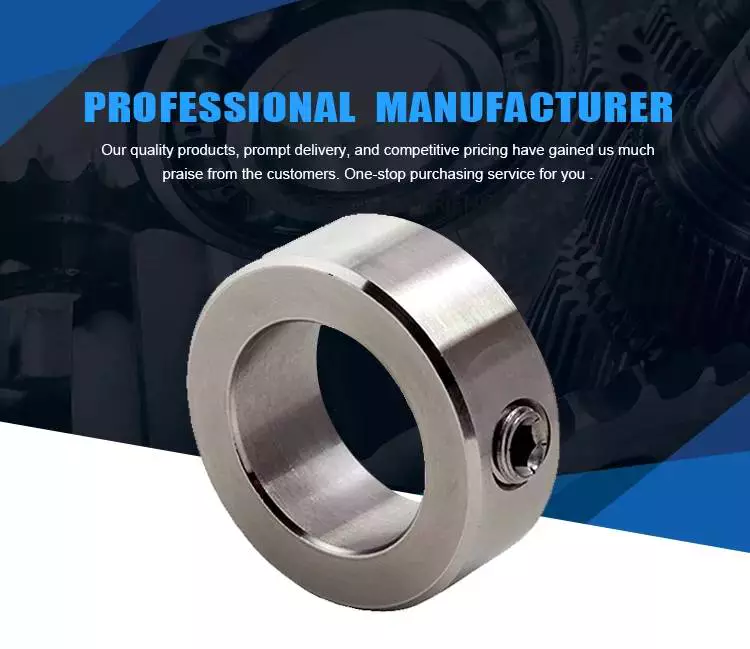
Single split shaft collars
Single split shaft collars are a common design choice for industrial applications. They provide easy installation and disassembly, reducing downtime and labor. Unlike traditional collars, they use full seating torque of set screws, resulting in even distribution of forces along the shaft circumference. In addition, they provide stronger holding power.
Single split shaft collars are available in a variety of sizes and materials. They are typically made of stainless steel, alloyed steel, or nylon. They are available with a black oxide finish or a smooth finish. In addition, they can be manufactured to custom sizes. The benefits of shaft collars manufactured by Power Rite are the high quality of their materials and the close tolerances of their manufacturing process.
Single split shaft collars are available in D-bore or hex bore configurations. They are designed to fit shafts with diameters from 1/4″ to 6″. Some of these types also have a proprietary black oxide finish. Single split shaft collars can be manufactured with a range of materials, including 303 stainless steel and 1215 lead-free steel. They can also be made with engineered plastic.
Single split shaft collars are an excellent choice for applications where accurate positioning is essential. These collars can be easily installed and removed without removing any of the shaft components. They feature double grub screws to help tighten the clamp around the shaft. This feature makes installation and removal easier and reduces downtime.
Single split shaft collars are also available in a lightweight style for applications where space is an issue. While these collars are ideal for light-duty applications, they are not ideal for heavy-duty environments. Single split shaft collars are generally made of a softer material, such as steel. They have high torque capacities and hold securely around a shaft. However, their high holding power and low friction means they can damage a shaft or cause indentations that make repositioning the shaft difficult.
Clamp-style shaft collars are another option for tougher installations. This type offers more clamping power than a one-piece shaft collar. They come in either a one-piece or two-piece design, and can be installed by hand.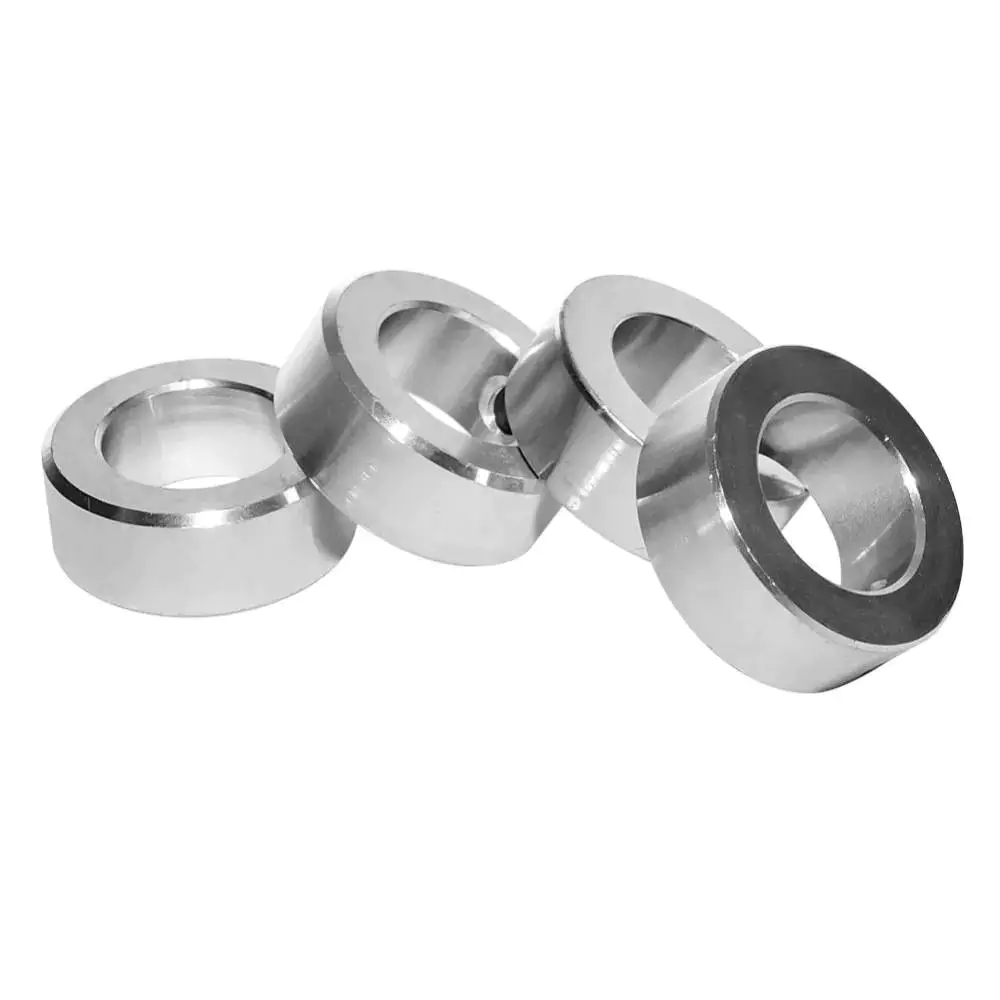
Set screw collars
Set screw collars are used to secure shafts. They are available in a variety of sizes and materials. Available options include hex socket, cup point, and 3A thread screws. They are suitable for a variety of industries, including food, wood, and chemical. A distributor of set screw collars can custom-design them to meet the specifications of a given application.
There are many different types of shaft collars, which include socket set screw collars, 2-hole set screw collars, and metric and stainless steel collars. In addition to these, you can also find corrosion-resistant set screw collars with a black oxide finish. These collars are ideal for industrial and commercial applications and are RoHS compliant.
Set screw collars are the most cost-effective option for shaft collars. They also offer lightweight options for applications where space is at a premium. Additionally, they can be equipped with a second screw positioned at 90 degrees to provide additional load capacity. They also come with a keyway to accommodate keyed shafts. These collars provide a reliable solution for securing shafts in a variety of applications.
Compared to set screw collars, clamp-style collars are easier to install and have greater holding power. They are available in one and two-piece versions. Clamp style collars are designed to lock onto a shaft while not damaging it. In addition, they are easily removed and reinstalled. They can be used in a variety of settings, including in guiding systems and bombsights.
Set screw shaft collars are an excellent choice for applications where precision is important. They prevent shafts from moving and hold power transmission components in place. The set screw collar is set in place with a grub screw or set screw. The screw driver can adjust the set screw to achieve the desired position.
Quick-clamp shaft collars
Quick-clamp shaft collars are a simple yet effective way to secure shafts. These collars have an eccentric lever that generates a locking force on the shaft. They are easy to install and remove and are manufactured with an aluminum design. In addition, these collars have a low mass inertia value. They are available in both one-piece and two-piece styles. Both styles have outer diameter flats for mounting other components.
The Quick-clamp shaft collars are resilient and feature a flush handle. They are easy to install and adjust, eliminating the need for tools and reducing production downtime. Another feature of these collars is that they have a high-strength tension adjustment screw that ensures compatibility with a wider range of shaft tolerances. These collars also have an axial holding power adjustment screw.
CZPT manufactures two types of quick-clamp shaft collars. One type has a cam lever that sits flush with the outside diameter and is finger-actuated. The other type is a clamp-style collar with a tension-adjustment screw. This design is better suited to low-rpm applications, or for frequent changeovers.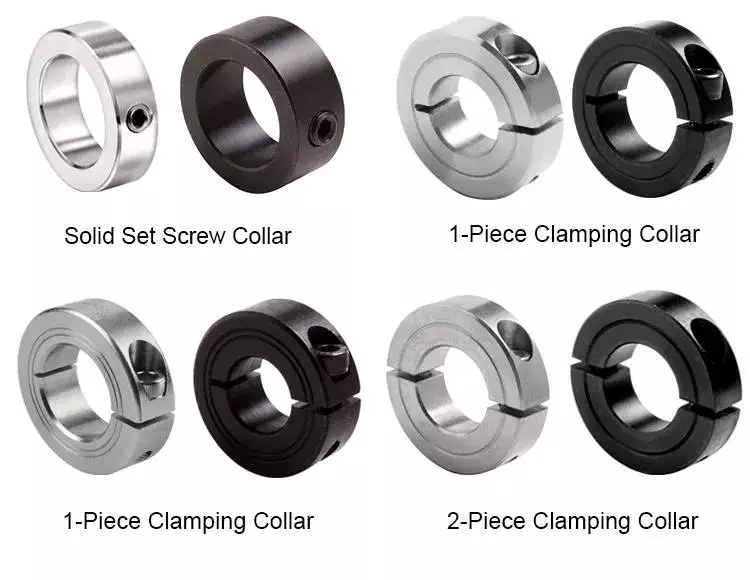
Choosing the right shaft collar for your application
Shaft collars play a key role in many industrial applications, and choosing the correct one is critical. They need to be designed properly and have the appropriate performance characteristics to ensure safe and effective operation. In this article, we will look at the different types of shaft collars and how to choose the right one for your needs. Typically, shaft collars are made from steel or aluminum, coated with zinc or another corrosion resistant material. But they can also be made from non-metallic materials.
Shaft collars come in a variety of shapes and materials, and the right one for your application will depend on these features. The key factors to consider are the material, holding power, and surface treatment, and their alignment with your application specifications. The shaft collars that fit your application best are often highly customizable, so it is important to determine the exact specifications for your application.
Shaft collars are simple and versatile components that are used to secure bearings on a shaft. They also serve as mechanical stops and can help to align and space other components. Shaft collars are widely used in gearbox assemblies, flagpoles, medical instruments, and other applications. They are available in a wide variety of styles, and can be used for nearly any application.
The type of shaft collar you choose will depend on the application and the type of machine. A heavier duty shaft collar will provide better vibration and shock resistance. These collars are typically designed for off-road or mining applications, and can be made of heavy-duty steel. They also provide more holding power, as double-wide shaft collars can provide an additional 25% of holding power.
When choosing a shaft collar, it’s important to consider the application and the required level of maintenance. Some assemblies will only need minor adjustments, while others require frequent disassembly. A two-piece shaft collar is a better option for assemblies that will have to be removed often.

editor by czh2023-02-16